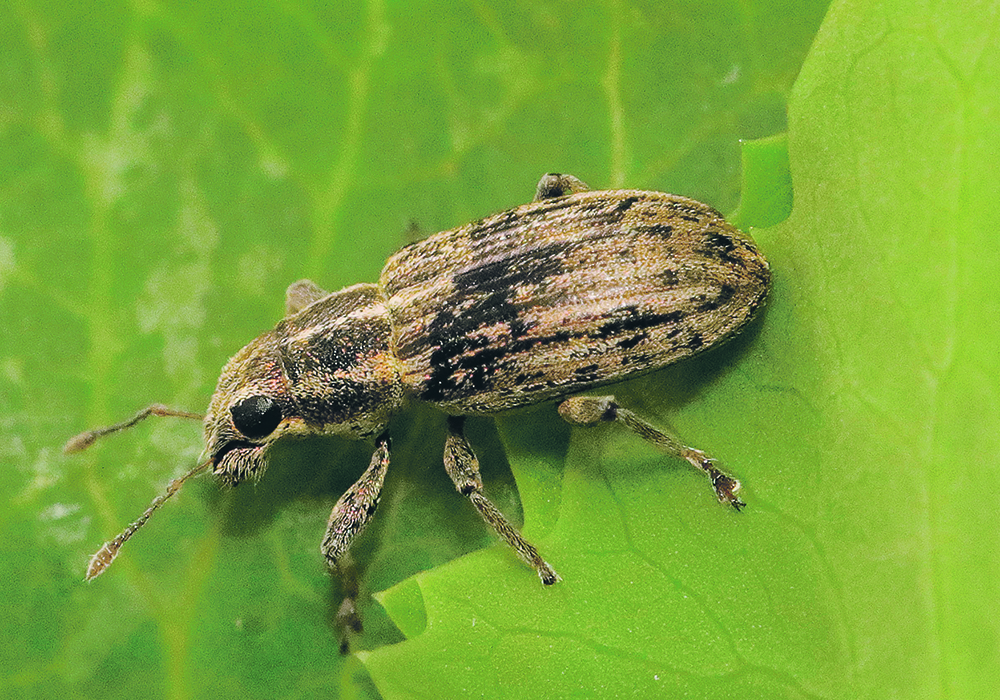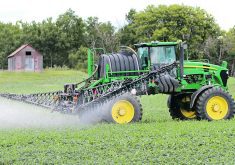Canada Grains Council says important technical data were not properly considered in lambda-cyhalothrin decision
A lot went wrong during the process the Pest Management Regulatory Agency (PMRA) used to ban lambda-cyhalothrin and it’s time to take the fight for the ability to use this active ingredient to a political arena, said Gord Kurbis, vice-president of trade policy and crop protection at the Canada Grains Council.
Lambda-cyhalothrin is the active ingredient in crop protection products including Matador and Silencer, that are used for a range of pests and crops including pulses.
“We have made our case known to the PMRA, to Ag Canada, to a whole bunch of elected officials and we hope to move this discussion out of the technical arena that it’s in and begin to talk about the process problems at a higher level,” Kurbis said during a panel discussion during Crop Week in Saskatoon.
Read Also

Using artificial intelligence in agriculture starts with the right data
Good data is critical as the agriculture sector increasingly adopts new AI technology to drive efficiency, sustainability and trust across all levels of the value chain.
He said he doesn’t question scientists at the PMRA when a decision comes out to ban an active ingredient, when they’ve done their due diligence.
However, in this instance he said the PMRA did not use important information in its deliberations.
Kurbis said he is concerned with two decisions:
- One is the final April 2021 decision to cancel all feed uses including for grain that is going to come into force in April 2023.
- The second is this decision on the reinstatement application submission that was submitted in September 2021.
“On decision number one, there was a new U.S. toxicology data set that they’ve had since 2018 that wasn’t incorporated into that final decision. On the second decision, there are new samples that all show non-detects that should be incorporated into the reinstatement decision that don’t appear to be reviewed,” Kurbis said.
The U.S. toxicology dataset was produced by the Council for the Advancement of Pyrethroid Human Risk Assessment (APHRA), and it was approved by the U.S. Environmental Protection Agency, which resulted in a decision by the EPA to allow lambda-cyhalothrin to be used on food and feed in the U.S.
In 2017, when the PMRA first decided to cancel all food and feed uses for lambda-cyhalothrin, there was a 90-day public consultation period where new data could be submitted.
Syngenta, lead registrar for lambda-cyhalothrin, was unable to submit its new data in time, although it asked the PMRA to delay its decisions and to incorporate the forthcoming toxicological data, said Anna Shulkin, Head of Regulatory and Stewardship for Syngenta Canada during the panel discussion.
“We brought a representative from this working group (APHRA) from the U.S. to Canada to meet with the PMRA twice, to explain the data set because it’s very complex data set. The data was submitted in 2018 and 2019. So certainly, it was submitted after a public consultation period, which unfortunately is only 90 days. After 90 days we are not allowed to submit new information and that’s unfortunate part of the regulatory system,” she said.
Beyond having the APHRA data set since 2018, the PMRA also has access to the USDA decision.
Kurbis said the PMRA also decided it could no longer use Canadian Grain Commission residue data in its risk assessment because the data was more than five years old.
The PMRA is working to re-evaluate every active ingredient registered in Canada every 15 years, which is why lambda-cyhalothrin was re-evaluated.
From this re-evaluation, the PMRA released a proposed decision in June 2017, which was set to cancel all food and food uses.
In April 2021, the PMRA made a final decision saying most uses of lambda-cyhalothrin are acceptable, but it cancelled all feed uses, including grain.
“Something got lost in translation there. The intent, reading between the lines, and I think I can say this, was probably to say forage use could be of concern, also treatment of any crop you’re going to cut for silage, but for grain that’s not the issue. But somehow it got lumped into a decision,” Kurbis said.
“At the time we just about fell off our chairs because we thought well this language isn’t workable. How can you specify a grain crop and say you can treat it with lambda if that grain crop is going to be used for food, but the second that it’s used for feed is technically off the label? That’s a big concern. I mean, it wouldn’t need to explain this to anybody in this room, but when you go to Ottawa, you’d have to explain that.”
Kurbis said he considers the PMRA’s decision unworkable because of the food versus feed distinction in the decision, which he’s never seen on any previous PMRA decision.
He said this could cause a trade irritant with the U.S. and that a system will be needed to determine if any U.S. corn imported into Canada have been treated with products that contain lambda-cyhalothrin.
“Does that mean there needs to be some sort of system in order to be able to try to determine blended U.S. corn coming up and whether any of that’s been treated, or would you measure compliance by saying all the pesticide residue data for corn coming up is non-detects for lambda,” Kurbis said.
“Those would be two pretty significant enforcement mechanisms and out of that would mean there would be a trade problem with U.S. corn coming up. Or it means Canadian farmers would be at quite a significant disadvantage.”
He said everyone close to this issue believed the January 2023 decision on a reinstatement application was going to overturn the agency’s 2021 final decision.
This was because of the U.S. toxicology data set, new residue data from samples that shows non detects and because the PMRA can drop uses from product label, including for forage and silage, and retain grain uses.
The PMRA gave notice it will not be able to decide on the reinstatement application for lambda-cyhalothrin by January 2023.
For now, Syngenta has pulled its lambda-cyhalothrin products from the Canadian market.
















